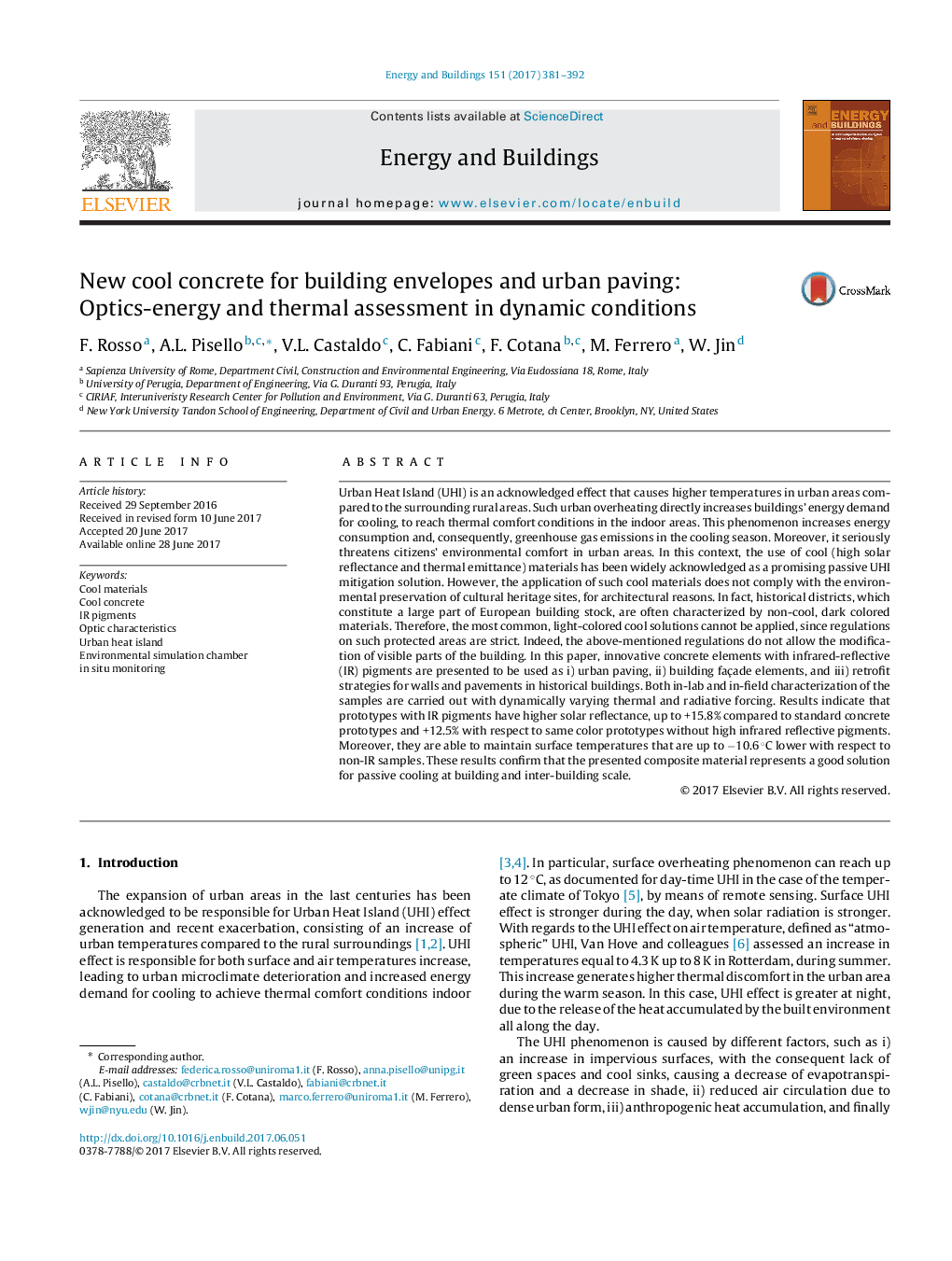| Article ID | Journal | Published Year | Pages | File Type |
|---|---|---|---|---|
| 6481105 | Energy and Buildings | 2017 | 12 Pages |
Urban Heat Island (UHI) is an acknowledged effect that causes higher temperatures in urban areas compared to the surrounding rural areas. Such urban overheating directly increases buildings' energy demand for cooling, to reach thermal comfort conditions in the indoor areas. This phenomenon increases energy consumption and, consequently, greenhouse gas emissions in the cooling season. Moreover, it seriously threatens citizens' environmental comfort in urban areas. In this context, the use of cool (high solar reflectance and thermal emittance) materials has been widely acknowledged as a promising passive UHI mitigation solution. However, the application of such cool materials does not comply with the environmental preservation of cultural heritage sites, for architectural reasons. In fact, historical districts, which constitute a large part of European building stock, are often characterized by non-cool, dark colored materials. Therefore, the most common, light-colored cool solutions cannot be applied, since regulations on such protected areas are strict. Indeed, the above-mentioned regulations do not allow the modification of visible parts of the building. In this paper, innovative concrete elements with infrared-reflective (IR) pigments are presented to be used as i) urban paving, ii) building façade elements, and iii) retrofit strategies for walls and pavements in historical buildings. Both in-lab and in-field characterization of the samples are carried out with dynamically varying thermal and radiative forcing. Results indicate that prototypes with IR pigments have higher solar reflectance, up to +15.8% compared to standard concrete prototypes and +12.5% with respect to same color prototypes without high infrared reflective pigments. Moreover, they are able to maintain surface temperatures that are up to â10.6 °C lower with respect to non-IR samples. These results confirm that the presented composite material represents a good solution for passive cooling at building and inter-building scale.
Graphical abstractDownload high-res image (165KB)Download full-size image
